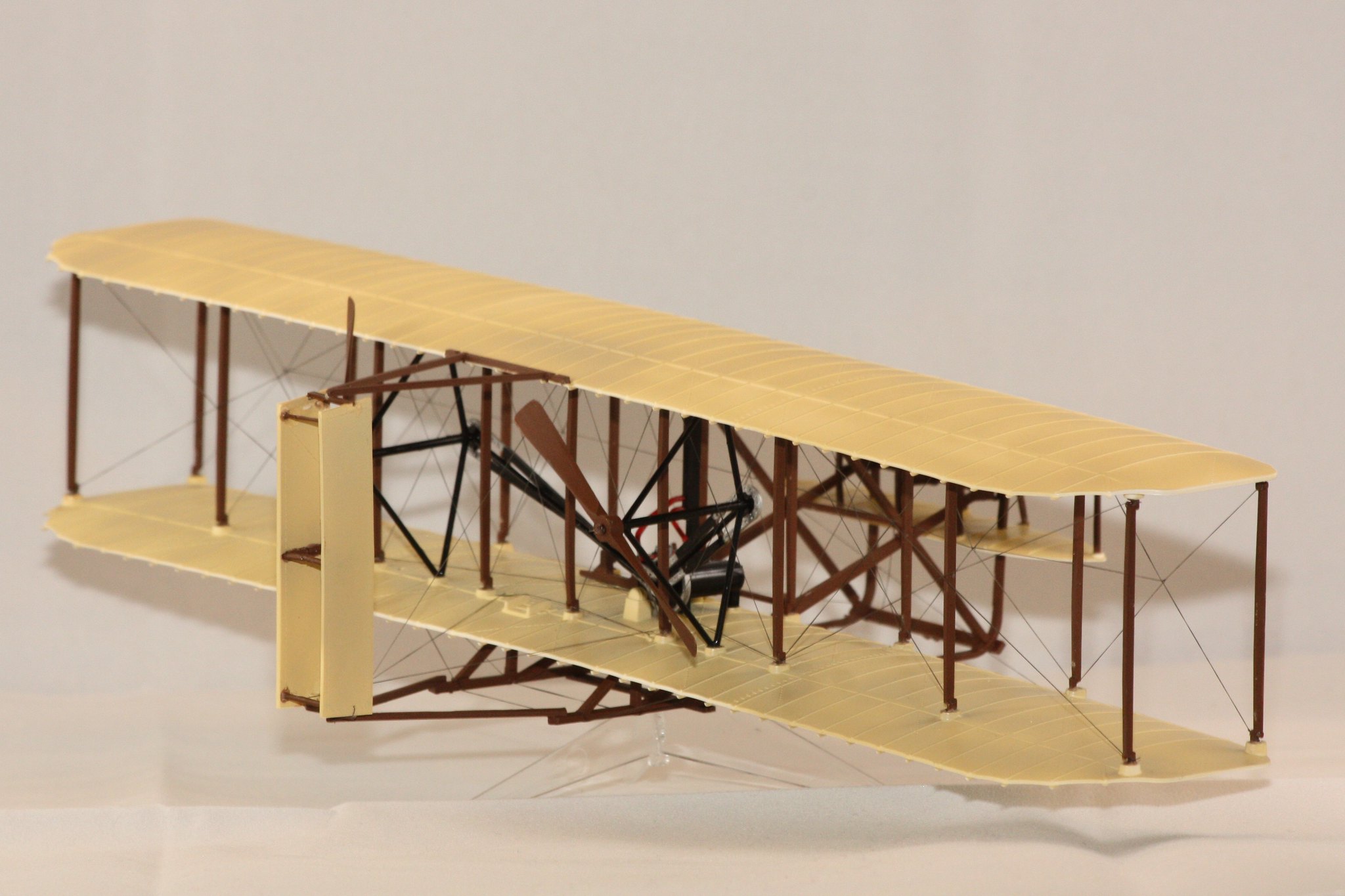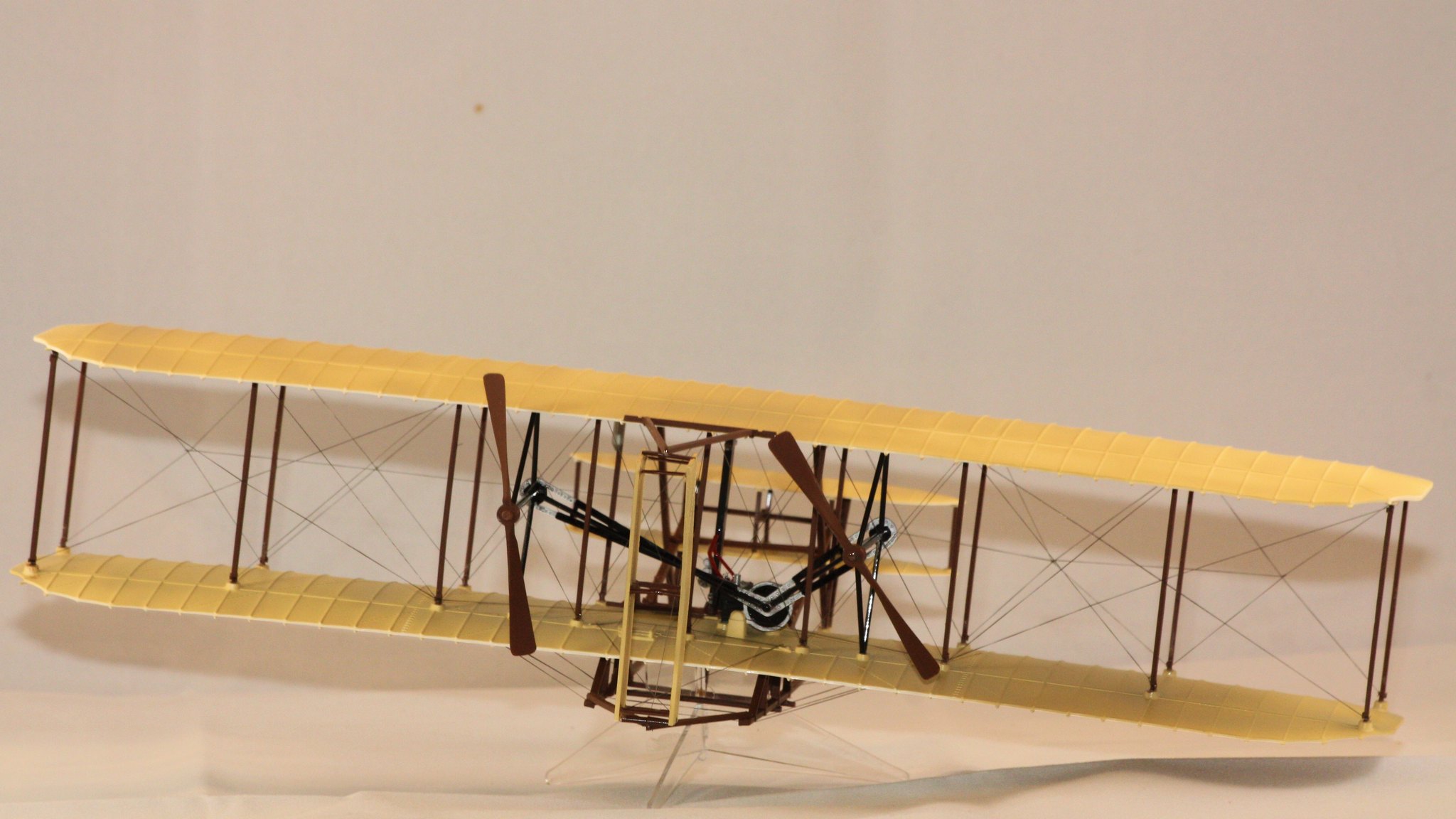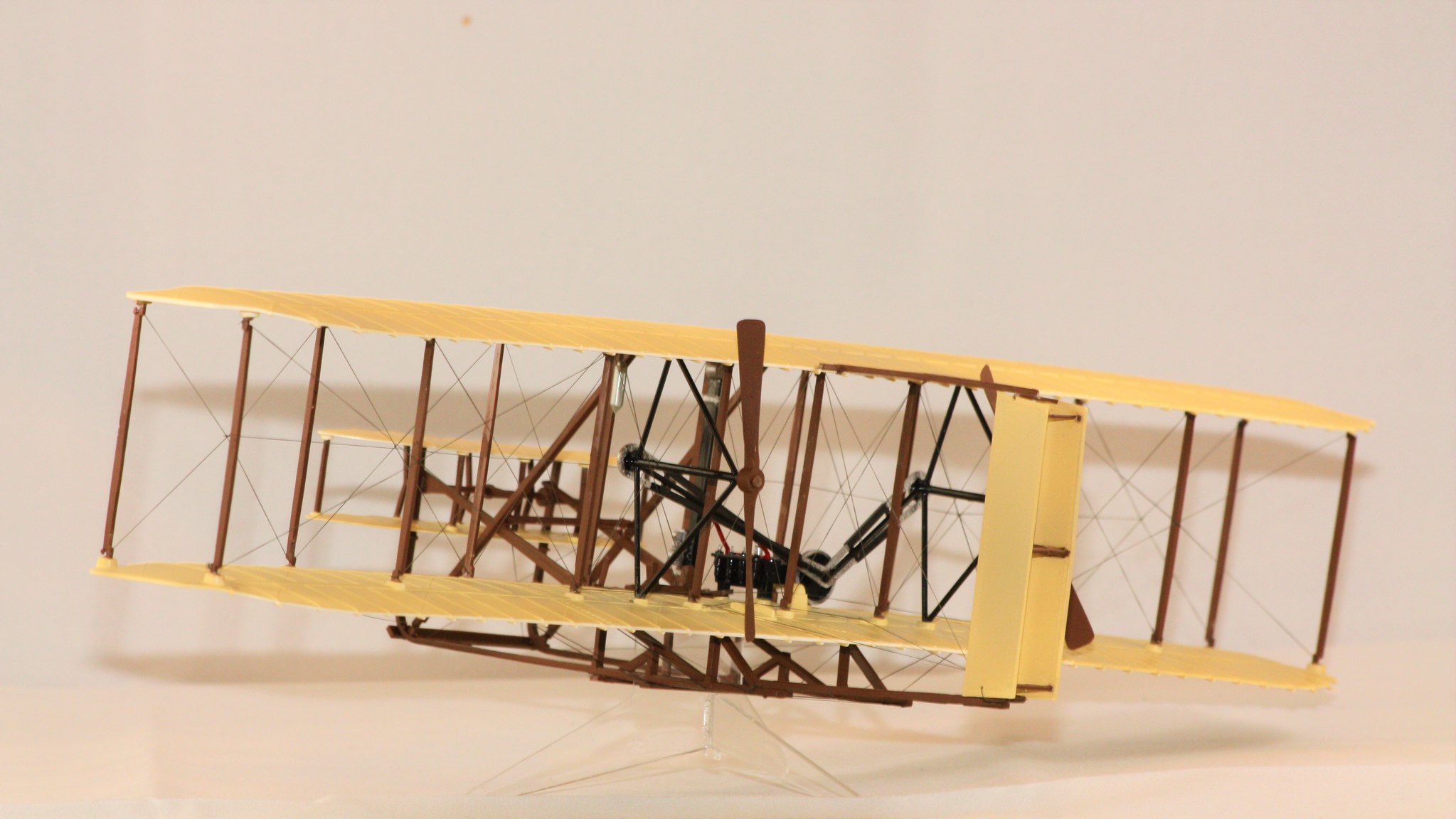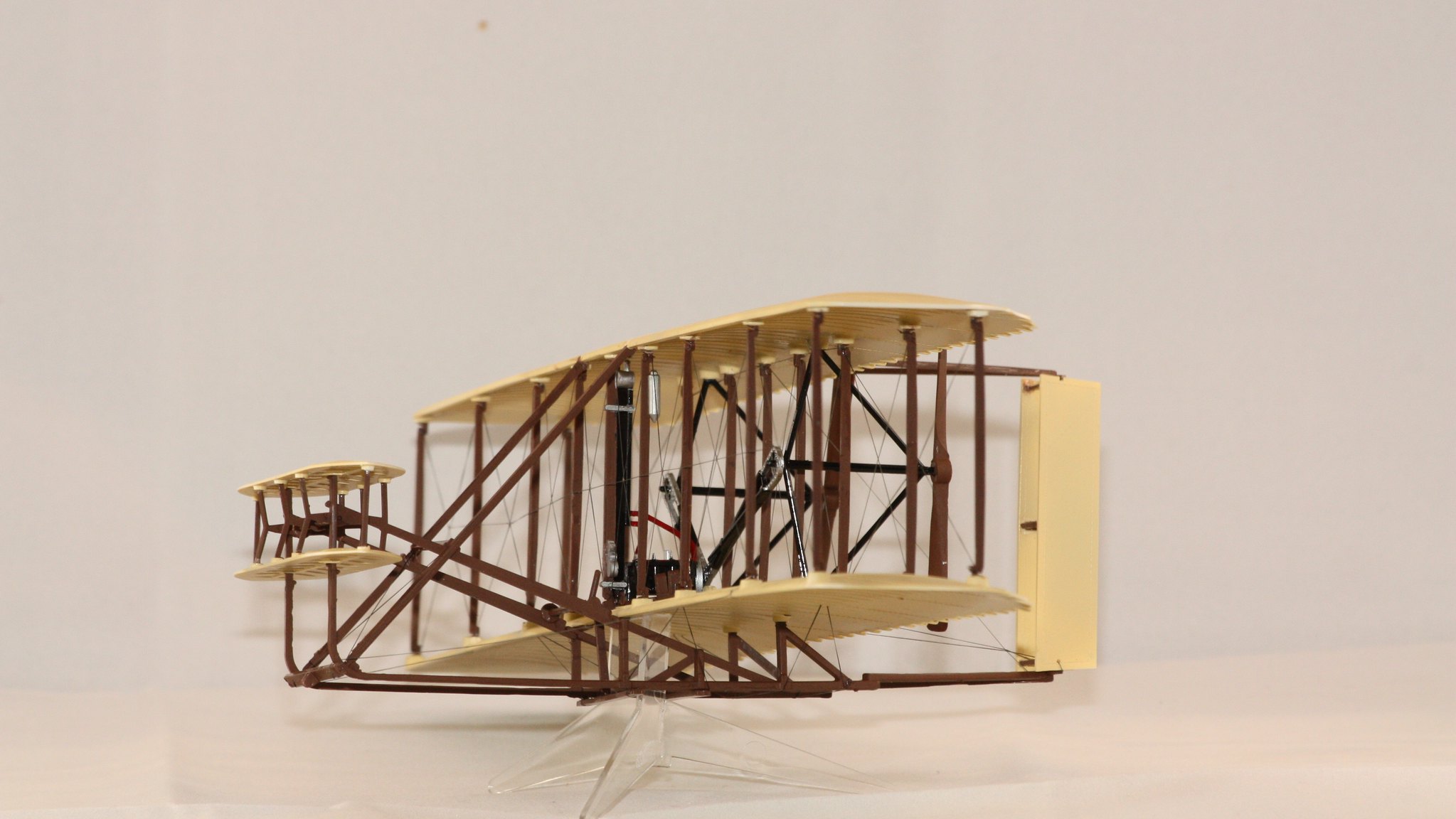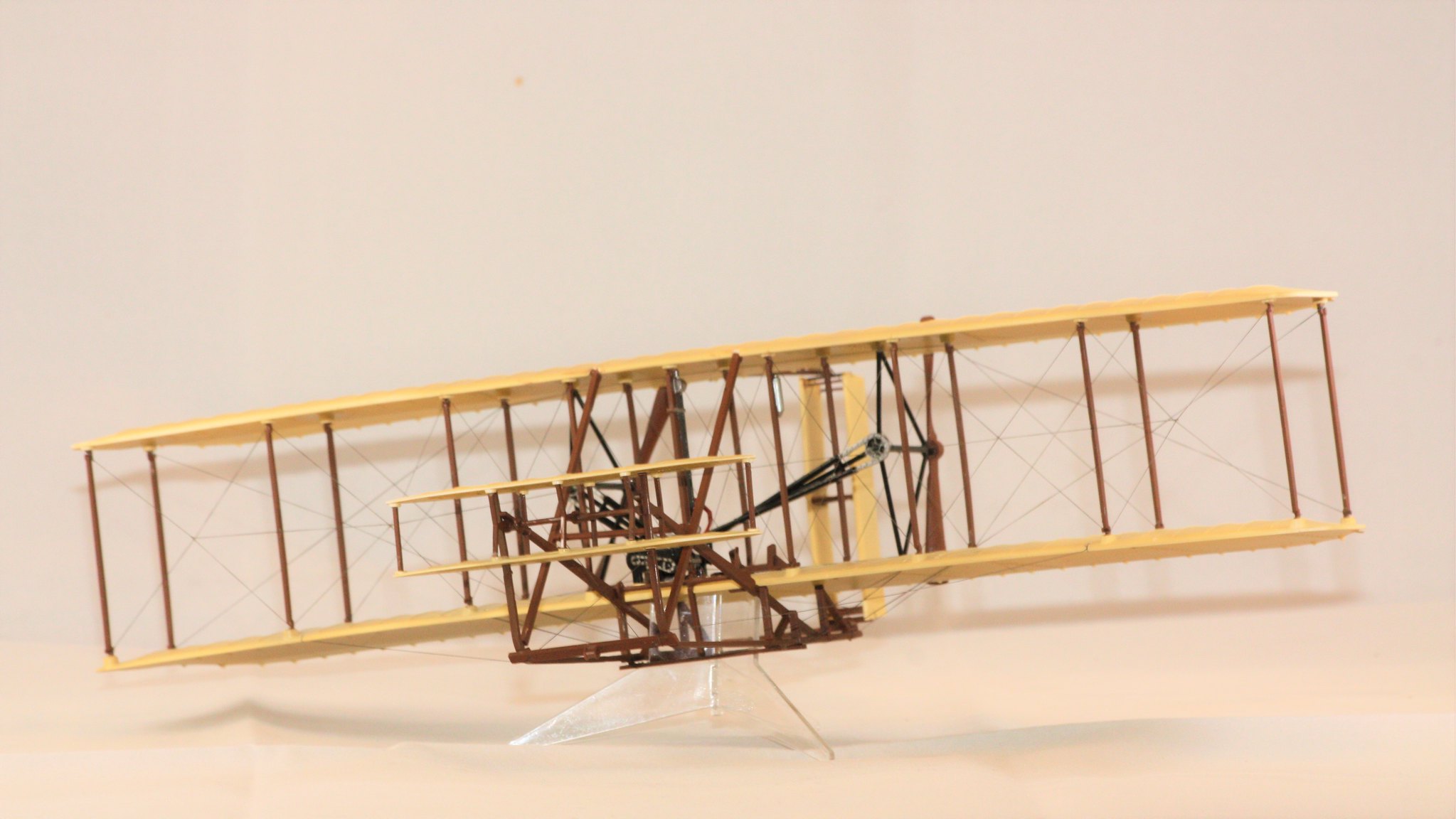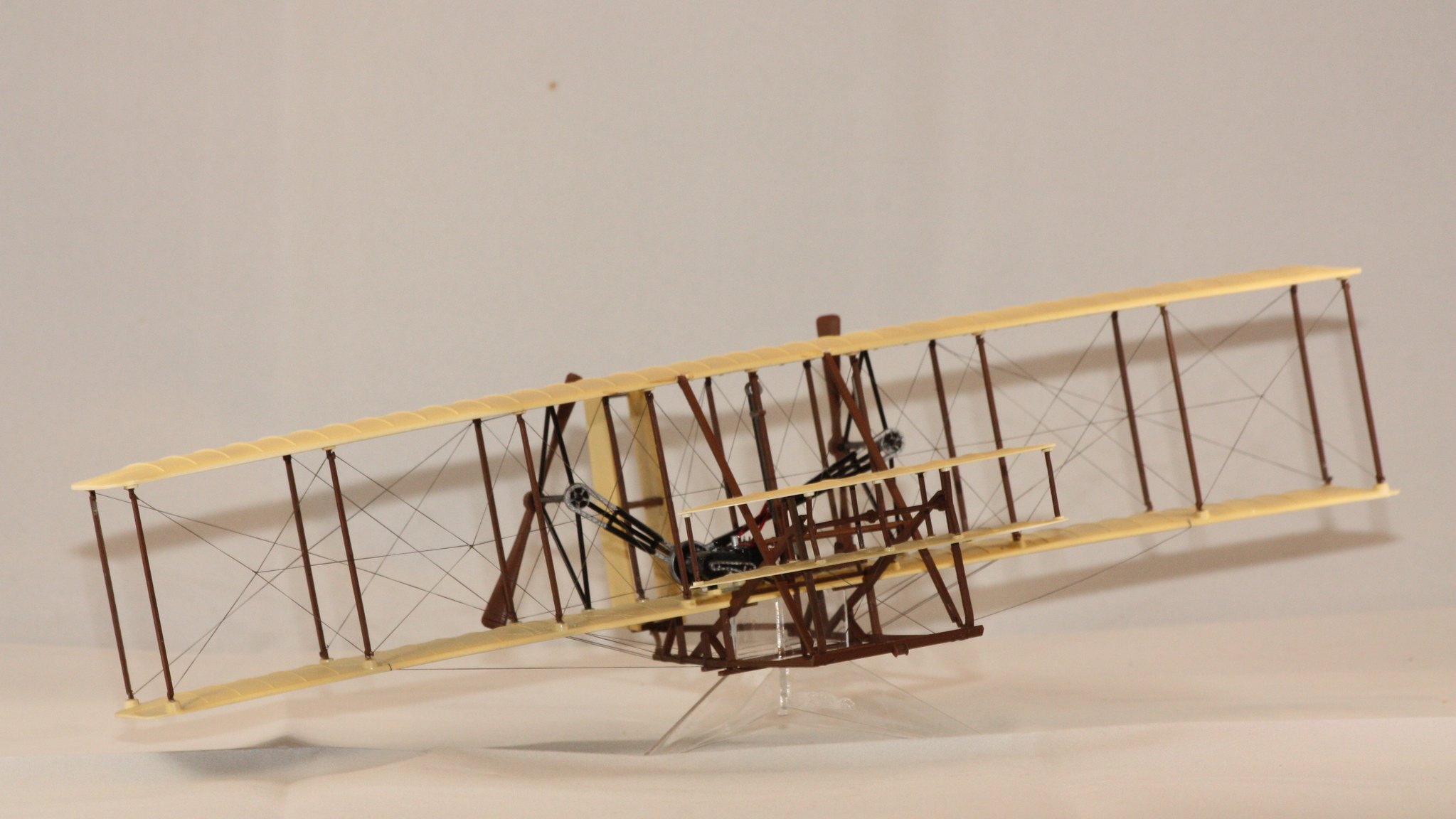This will be my first time posting on this board, as I typically build airplanes that are designed to carry bombs and drop them on things. During the last two years I built a bunch of Allied and then Axis aircraft exclusively, so I figured this year I would go with more of a whatever approach to determining what to build next.
The Wright Brothers' historic aircraft is a particularly interesting aircraft and is one that has been a memory for many of my 51 years. The background on this is that I first attempted to build this kit, Monogram's ancient 1/39 scale kit dating back to 1958 or thereabouts, when I was in 5th grade. The kit defeated me. Of course, I was 10, and I didn't have all the various tools that I have acquired in recent years, nor did I have the patience (lots required for this one) or the understanding of how this type of airframe (to use that term loosely) would go together. What I recall most vividly is that I could not get the cabanes to align or stay in place long enough to get the upper wing attached, and that of course was quite an exercise in frustration that my 10-year-old self could not deal with. I think, ultimately, that kit ended up in the garbage.
That memory has stuck with me for all these years, even through a visit to the National Air and Space Museum, where the actual Wright Brothers' flyer is displayed. And as such, a few years ago when I was acquiring all of the old Monogram kits in the '60s era blue boxes, this was one of the first that I ended up nabbing.
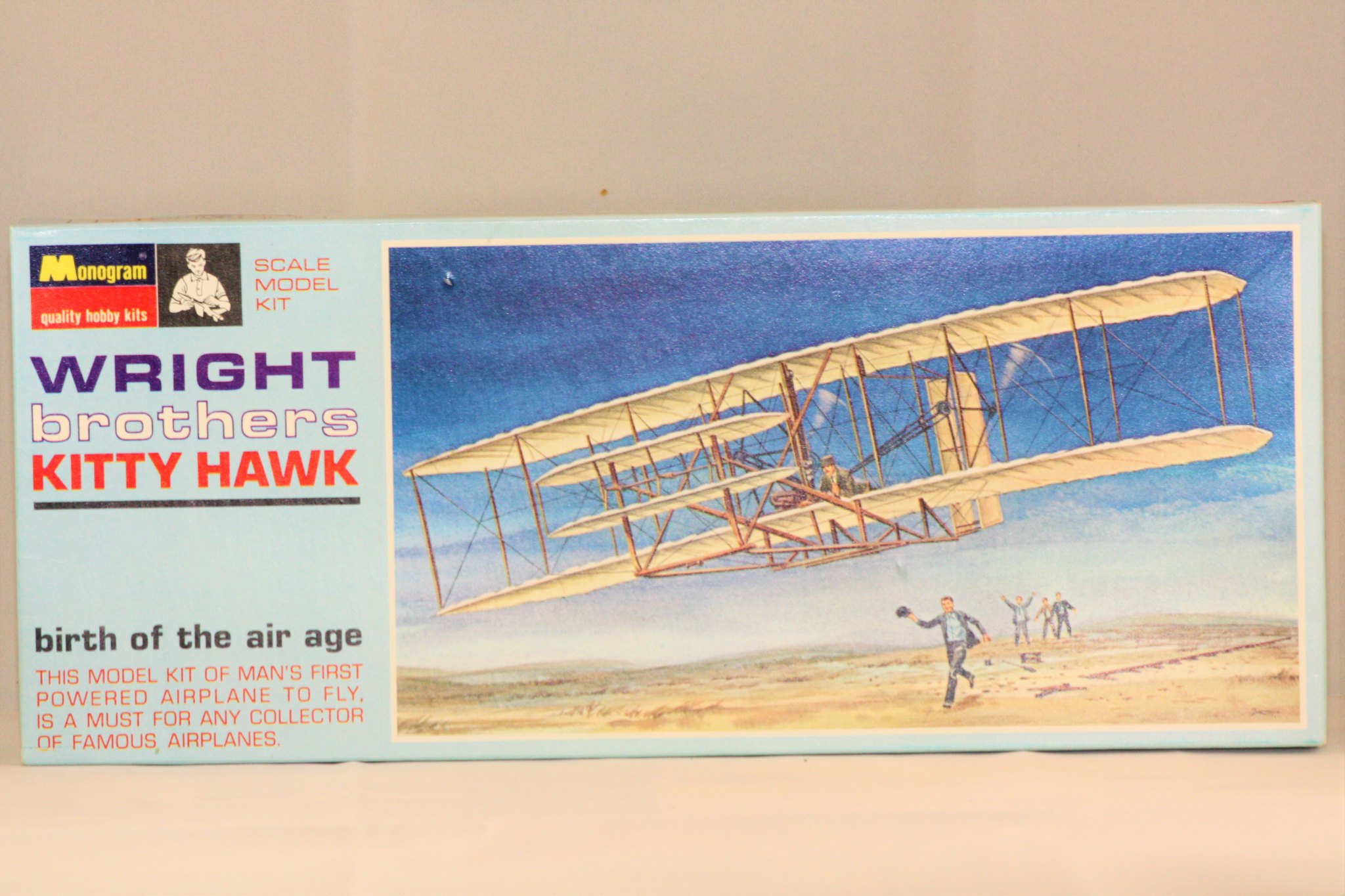
I painted every piece of this kit even thought the parts were molded in colors mostly appropriate - a light beige for the wing parts, and dark brown for all the "wooden" parts. I used Vallejo flat brown for the wood, opting not to attempt a more involved painting with clear orange to mimic wood grain. For the linen surfaces, I mixed up a small bottle of this comprised of Tamiya flat white (40%), Tamiya Buff (20%), and Tamiya Dark Desert Yellow (40%). I'm not sure if it's exactly right but it is close enough to my liking. There is also some Tamiya Semi-Gloss Black and Tamiya Flat Red on some of the parts. I opted not to install the prone figure of Wilbur Wright nor to use any of the diorama parts included in the kit. I did mount it to the included clear plastic stand.
Rigging. Ugh. This airplane was never going to look right without all that rigging, so I sat and studied photos and the instructions to determine how to best go about installing all of that. I used EZ Line (the kit included a spool of gray thread that I was initially going to use until I determined that there was not going to be enough to complete the job). The parts are molded in such a way that makes the rigging process rather simply, with either tiny notches in either end of the cabane parts, or small holes pre-drilled in the lower wing, or with some small trenches along the underside of the flyer's landing skid.
I followed the directions as best I could in terms of rigging installation order, working first from the backside then to the front and finishing up with all the underside rigging. This required a good bit of patience, and I can easily see that I never would have accomplished this part back in 5th grade, even if I'd managed to get the cabanes and wings in place. Work was slow; I would attach a piece of EZ Line at the starting point, run it to the neighboring cabane, and hold it in place with a pair of self-locking fine point tweezers (running the line through the cabane attachment point and letting it dangle with the tweezers pulling the line taut through gravity; I used a biplane jig that I have (works great with monoplanes as well) to assist greatly in this effort).
It was a slow start, but once I got the hang of what I was doing, I was able to move things along at a little faster rate. The build itself was largely not challenging, but it was gratifying to defeat this one after my own history with it.
